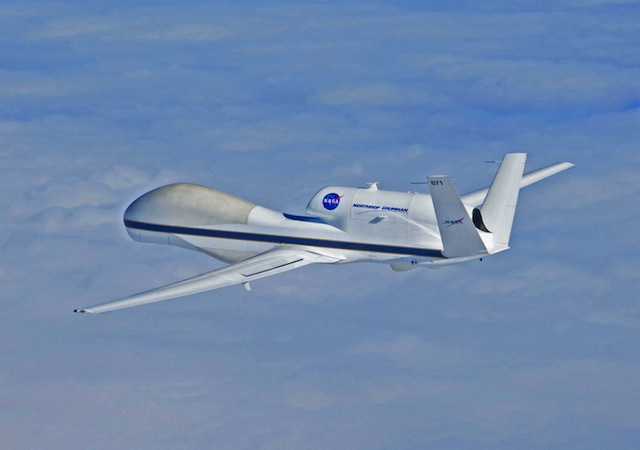Under an effort to aid the integration of unmanned air vehicles into national airspace, a NASA-led team has begun the testing of an advanced sense-and-avoid system using a General Atomics Aeronautical Systems Ikhana UAV.
It began on 17 June with a five-hour test, and will carry on into July at NASA’s Armstrong Flight Research Center at Edwards AFB in California. This is the third round of tests that follow on from previous testing carried out by the team in 2014.
In addition to the UAV manufacturer and NASA, the US Federal Aviation Administration and Honeywell are involved in the testing, with the latter developing the sense-and-avoid technology.
This phase is split into two parts. The first element is to validate the sensor, trajectory and other simulation models utilising live data, with some of the testing being carried out using NASA’s Ikhana UAV. Other tests will involve an S-3B plane from NASA’s Glenn Research Center in Cleveland serving as a high-speed piloted surrogate aircraft.
Ikhana has been integrated with an updated sense-and-avoid system, and includes a new traffic-collision avoidance element and advanced software developed by Honeywell.

NASA
During the 17 June test, the team carried out 14 encounters using the Ikhana and a Honeywell-owned Beech C90 King Air acting as the intruder.
A second test was flown on 18 June, with a total of 23 encounters.
The team plans to fly more than 200 encounters throughout the first phase of the test series, NASA says.
Technology developed during the tests is expected to help inform the FAA in developing standards for sense and avoid on board UAVs for the future as the aircraft are introduced into national airspace (NAS).
The tests engage the core air traffic infrastructure and supporting software components through a live and virtual environment to demonstrate how unmanned air systems interact with air traffic controllers and other air traffic, NASA notes.
“This is the first time that we are flight-testing all of the technology developments from the project at the same time,” Laurie Grindle, UAS-NAS project manager at Armstrong, says.
Meanwhile, another of NASA’s UAVs – the Northrop Grumman RQ-4 Global Hawk – recently flew with a new open mission systems (OMS) architecture on board, demonstrating the speed at which new systems can be added to UAVs.

NASA
The upgrade flight took place at Armstrong. Ground operators sent OMS payload commands and received OMS subsystem status responses over a Ku-band satellite communications link between the unmanned aircraft and the operations centre.
The architecture paves the way for integration of new payload options for Global Hawk. In addition to flying on the UAV, the OMS architecture will be adapted and demonstrated in-flight on a manned airborne weapons system later this month, the company says.
Honeywell has also expressed interest in future testing of its sense-and-avoid technology on board a Global Hawk, for which it is in discussions.
Source: FlightGlobal.com



















